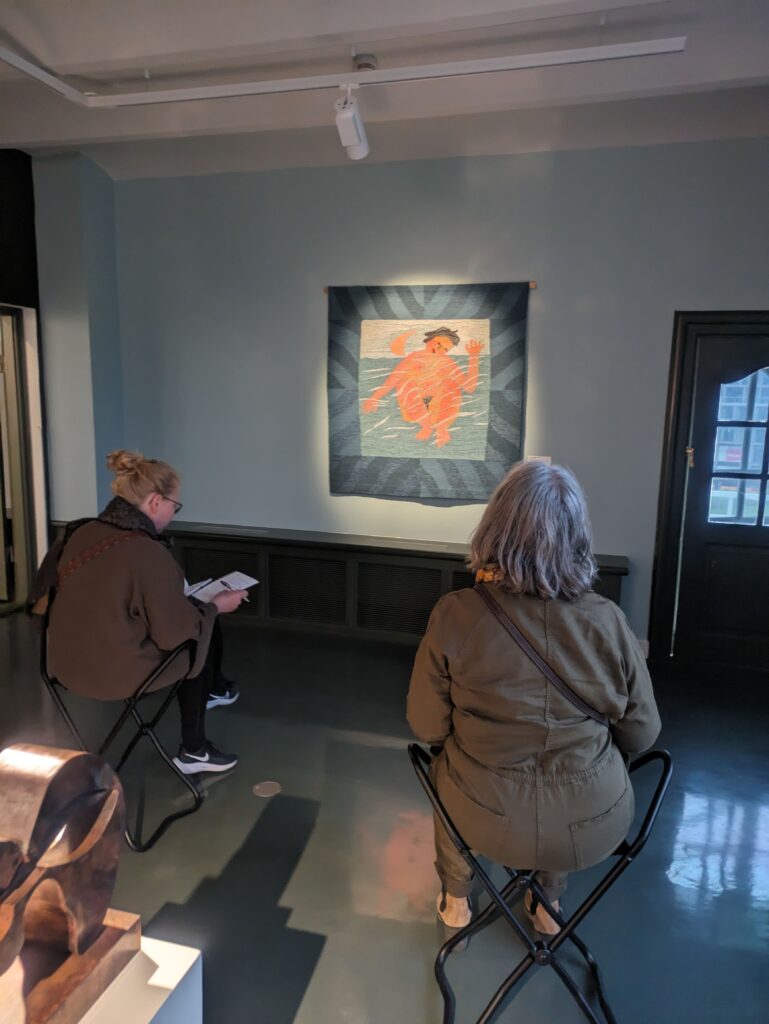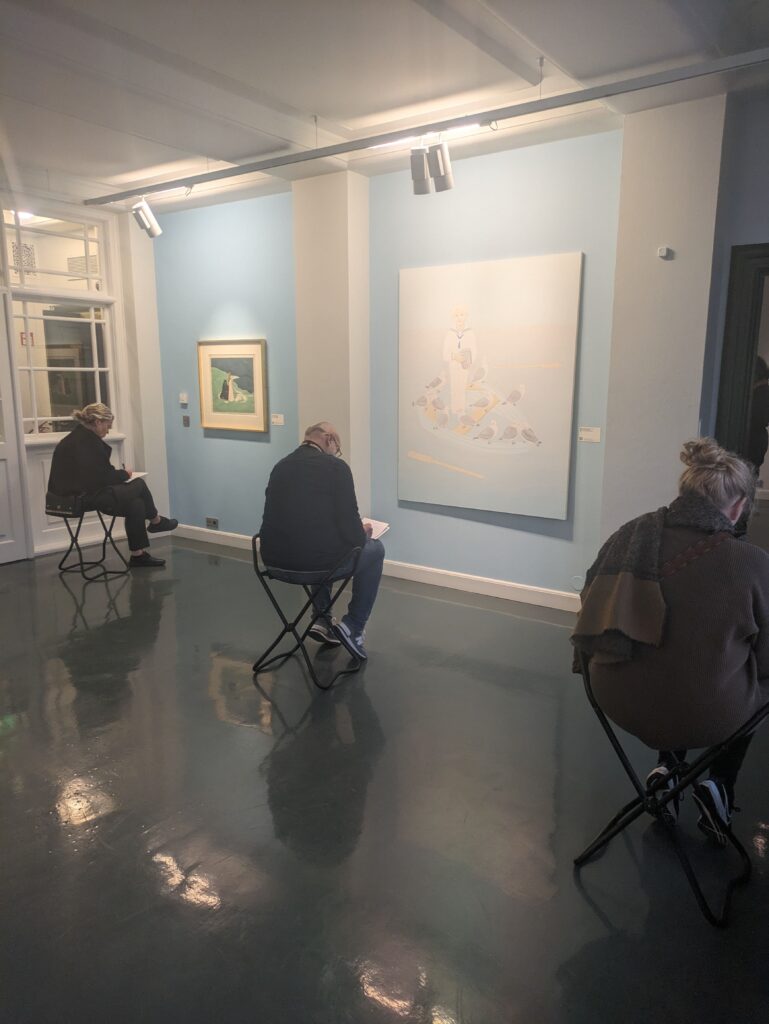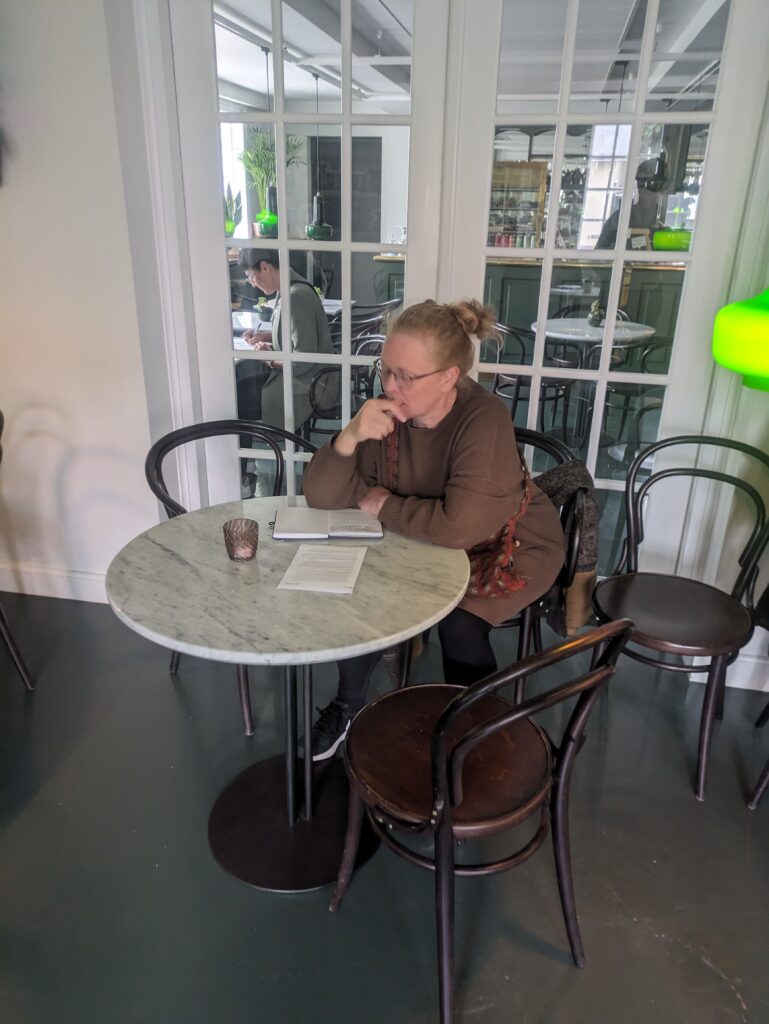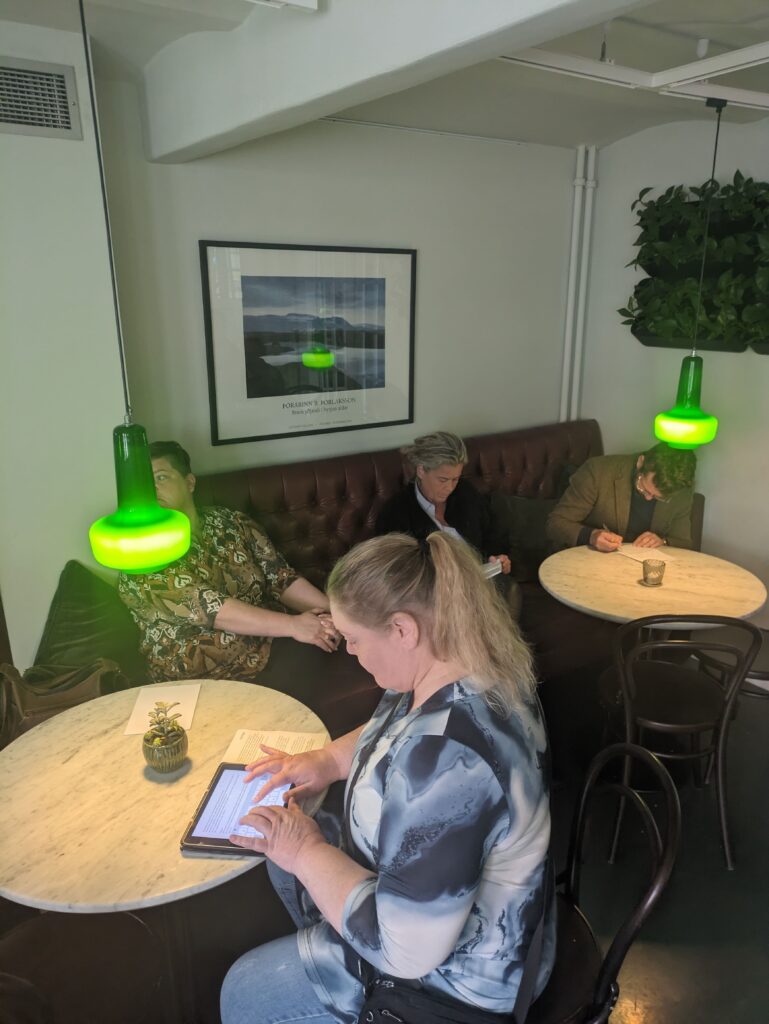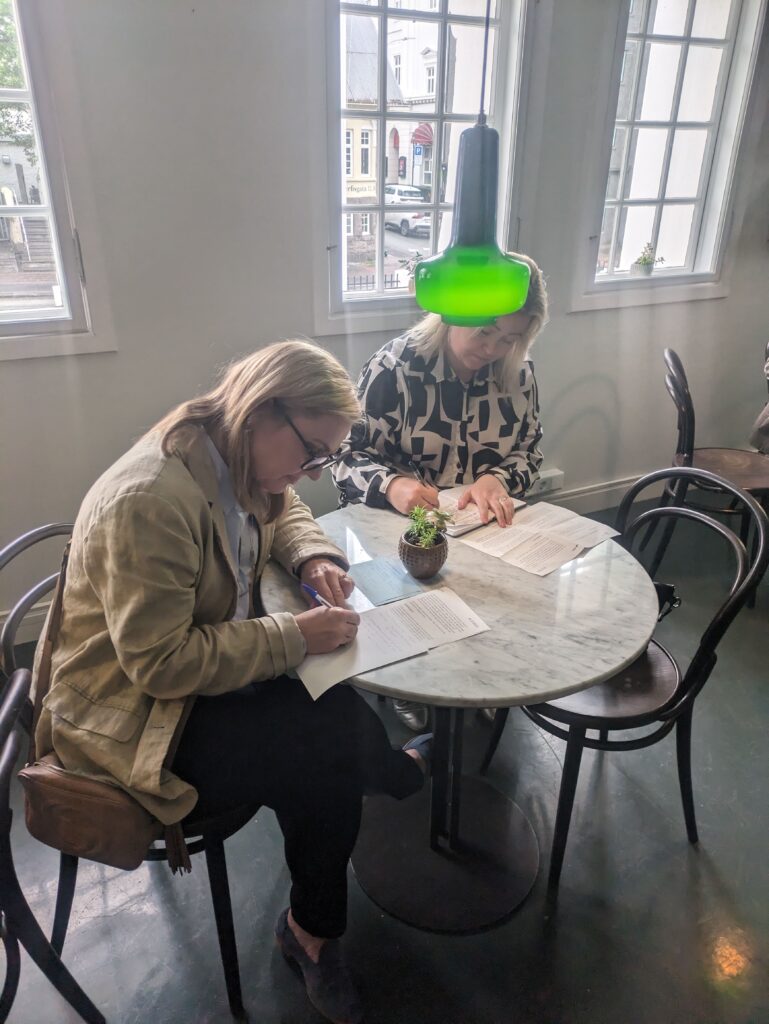Text doesn’t have to have words: Reading art in LIFE
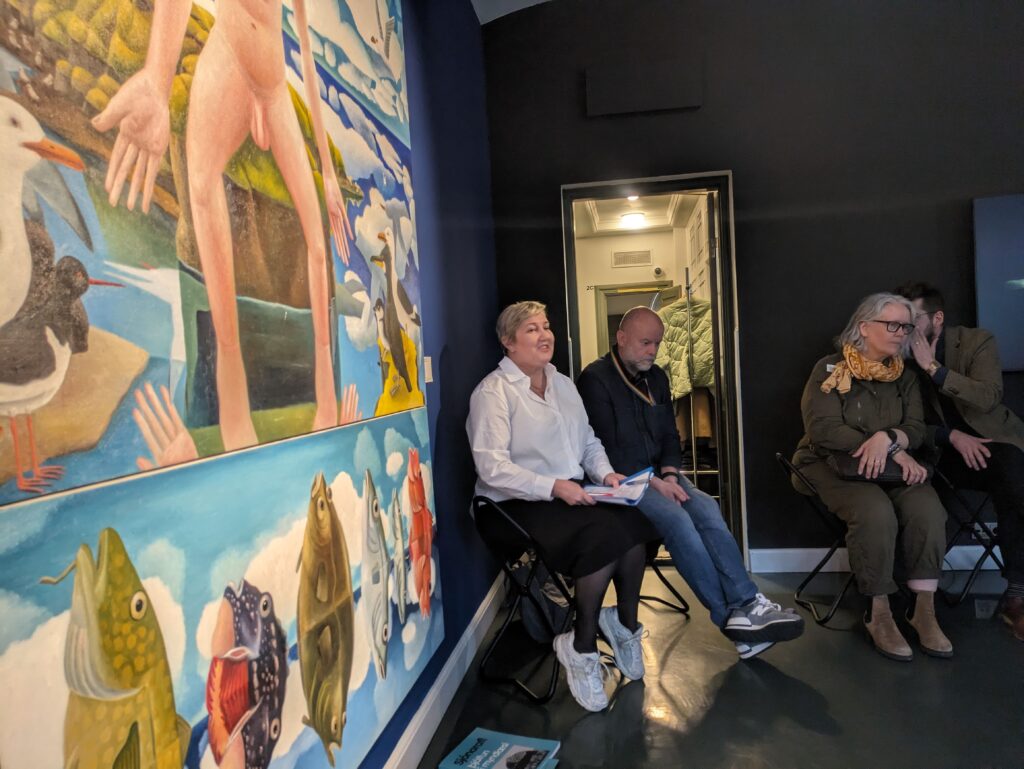
Walking into the National Gallery of Iceland in Reykjavik, the Icelandic LIFE participants, sat on foldable stools facing a painting. This time the texts would offer no written language, no letters on a page. Instead, the text the participants were “reading” was visual art. Through an engagement with art participants expanded their thinking on any of the five LIFE questions they have already considered in retreats and online: To whom am I responsible? How should I act? What should I hope for? What do I do when I fail? What role does suffering play in a good life?
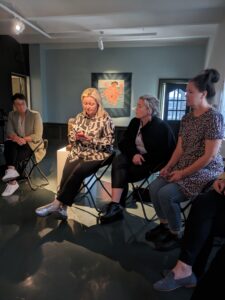
Working with the method developed at MOMA in NYC and adapted thoughtfully at the National Gallery of Iceland in recent years, participants experienced and learned about visual literacy. Visual literacy is a method that supports individuals in analyzing art and making it accessible by helping viewers to develop the ability to read and work with images - to understand what they see. The adaptation of this practice in Iceland is called, Sjónarafl. Visual literacy is trained through discussions and a proposed set of questions that enhance the individual’s ability to express personal opinions and feelings, describe and talk about what they see, increase conceptual understanding and vocabulary, broaden their perspective, and promote their critical thinking. The proposed questions fall into three broad categories: questions related to colors, form and materials such as, what colors do you see? What forms do you see? Are their contrasts in the pictures? What atmosphere do the colors create?; questions related to the viewer, their feelings and their experiences such as, where is the artist drawing your attention? What kind of emotions does the art bring up for you? Does who you are affect how you experience the painting? What does this work tell you about society today - and the society when it was made?; and creative questions such as What do you think the artist is trying to say with this picture? Do you see any symbols in the picture? Which Life Worth Living question does this work relate to? Why and what significance does it have for you?
In addition, the practice of visual literacy emphasizes both personal and relational curiosity when viewing art. Training in logical reasoning is a significant aspect of the pedagogy of visual literacy. Whenever someone makes a statement, it is important to ask, "What makes you say that?"

Following a full group discussion using visual literacy the participants were let loose in the art gallery to encounter, one-on-one, several pieces of art, to ask themselves a set of questions which included a final question: How did this piece of art expand, enhance, challenge your understanding of one of the LIFE questions?
Looking at art can feel intimidating for many people and visual literacy is a method by which art is fully democratized, it empowers viewers to look carefully and form their own thoughts and opinions on what they see. Furthermore, art has always shared a complicated and intricate relationship with societies and as such offers viewers both a mirror and potential catalyst for action and change. LIFE participants took quiet, reflective time in which they were given tools to access art and invited to allow that art to influence their thinking and their being – to work with the art to understand, in a new way, some of the fundamental questions of life.
Throughout the LIFE: Caring for our Educators and Principals journey, facilitator teams in all partner countries (Belgium, Greece, Italy, Bulgaria and Iceland) have worked to integrate various modalities and mediums to enhance participants’ experience by engaging with diverse texts and modes of expression (including collages, music, movement, poetry and art), precisely because LIFE aims to engage participants holistically through a variety of participatory methods as they discern and articulate for themselves what is a life worth living .

Funded by the European Union. Views and opinions expressed are however those of the author(s) only and do not necessarily reflect those of the European Union or the European Education and Culture Executive Agency (EACEA). Neither the European Union nor EACEA can be held responsible for them.

